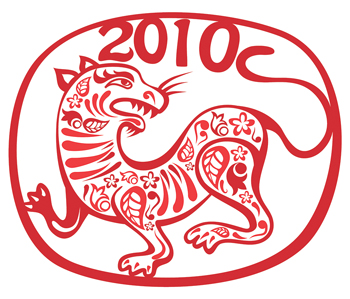|
Vol. 231 No.11 |

|
|
| PRAMOD KULKARNI, EDITOR |
Tiger on the prowl
A tiger is on the prowl from the East, stalking for energy in whatever form and wherever it is available in the world. The ancient civilization has awakened from a deep slumber and is taking a giant leap to capture a large share of the world’s energy resources. I was able to observe firsthand the potential that China represents for the oil and gas industry during a visit in October to make a presentation at the 2010 China International Energy Forum in Beijing.
 |
According to the Chinese calendar, 2010 is the year of the tiger. Appropriately, China has emerged this year as an economic tiger, prowling the globe to satisfy its thirst for oil and gas.
|
|
Phenomenal growth. Ping-pong diplomacy in 1971 shattered the bamboo curtain and spurred China’s emergence as the world’s low-cost manufacturing center, capable of satisfying the West’s insatiable demand for consumer and industrial products. In 1978, Deng Xiaoping introduced free-market reforms that accelerated economic growth. China’s gross domestic product (GDP) totaled $4.04 trillion in the first three quarters of 2010, growing 10.6% from the same period last year, according to the National Bureau of Statistics. During the second quarter of 2010, China surpassed Japan to become the world’s second largest economy behind the US.
China’s planners are currently formulating the 12th five-year plan for 2011–2015 to grow the economy to $7.5 trillion. Despite the enormous GDP, China remains a developing country in terms of annual per capita income at $3,744, 86th in the world. Consequently, China remains committed to stoking its growth engine to improve the economic well-being of its 1.3 billion people.
Urbanization. Urbanization is a major component of China’s growth. About 400 million people are expected to move from rural areas to urban centers over the next 15 years. By 2025 eight cities, Beijing, Shanghai, Chengdu, Chong-
qing, Guangzhou, Shenzhen, Tianjin and Wuhan, are expected to support populations of more than 10 million each. Such an urbanization trend will add a tremendous burden on China’s energy demand.
Additionally, the roadscape of Chinese cities has changed from bicycles and rickshaws to fast rail, buses and cars. As US car manufacturing capacity underwent severe contraction, Volkswagen China achieved a 39% increase in sales last year and sold 1.48 million cars in the first nine months of 2010. BMW also achieved record growth by selling 120,000 cars to a more affluent section of Chinese society. Audi registered its one-millionth car sale in China in mid-October.
To reduce congestion, Beijing controls the number of cars on the road through a rationing program. For example, on a Monday, cars with license plates ending in 0 and 5 are not allowed on the road. On Tuesday, the ban shifts to cars with license plates ending in numbers 1 and 6. Despite such severe measures, China experienced the world’s most excruciating traffic congestion in August when a road construction project caused a 60-mile, 10-day traffic jam.
Thirst for energy. China is exploring every possible opportunity to satisfy its energy demand, whether by increasing its internal production of fossil fuels and renewables or through imports. China currently relies on coal for 70% of its energy use. The country wants to reduce coal usage to 50% over the next 20 years through rapid growth in coalbed methane and shale gas production, and reduction in flared gas at oil production sites, and through solar, biomass and wind projects. Nevertheless, two Chinese companies have teamed up to develop coal resources in Australia’s Queensland state, which is expected to hold 10 billion tons of reserves.
Chinese operators are locking up production sharing contracts throughout the world. In a June report, Wood Mackenzie noted that China’s NOCs have been aggressively pursuing merger and acquisition activity, which will result in net overseas production reaching a new record level of 1 million boepd in 2010.
To support future energy needs, China Development Bank has made a $10 billion loan to Petrobras. In return, Petrobras is to supply Sinopec with up to 200,000 bopd for the next 10 years. Additional oil supplies will be available through Sinopec’s plans to buy ConocoPhillips’ stake in the Canadian syncrude project for $4.65 billion. Last April, Sinopec bought a 10% interest in Total’s Northern Lights project.
Also in 2009, PetroChina acquired a majority stake in leases held by Athabasca Oil Sands Corp. for $1.9 billion. CNOOC acquired a 33.3% stake in one of Chesapeake Energy’s shale fields in October to secure future gas production as well as get a close look at shale gas technology. In late October, CNOOC was reportedly making a $5 billion bid to buy Kosmos Energy’s assets in Ghana, including its stake in Jubilee Field.
World is flat. While in Beijing, I had an opportunity to observe a wellbore technology seminar by CNPC for customers of its drilling and completion services. More than 100 customer representatives had gathered from the Middle East, Eastern Europe and Latin America.
I sat through a presentation on multistage fracturing that was presented by a Chinese engineer and simulcast in English and Russian. The Chinese operators and service companies are developing technology innovations of their own and making an impact on reliability and cost efficiency. Western companies can no longer rest assured that oilfield technology will only be developed in the US or Europe, and China will remain just a low-cost manufacturer. The tiger is on the prowl, and it will be survival of the fittest in the jungle out there. 
|





